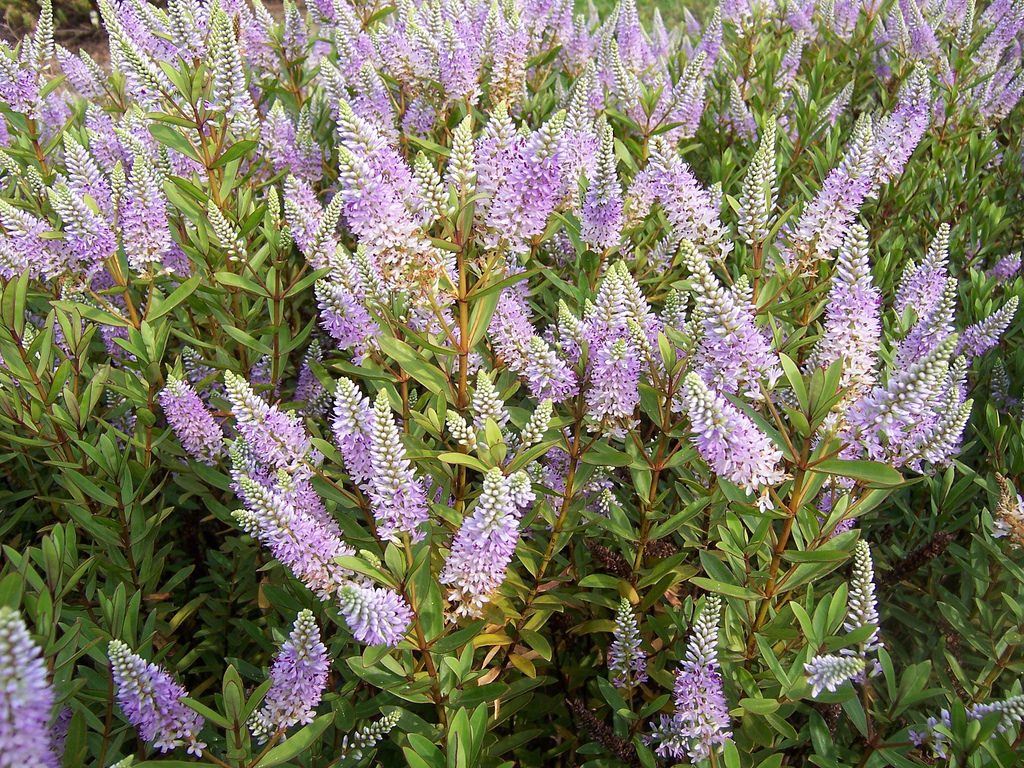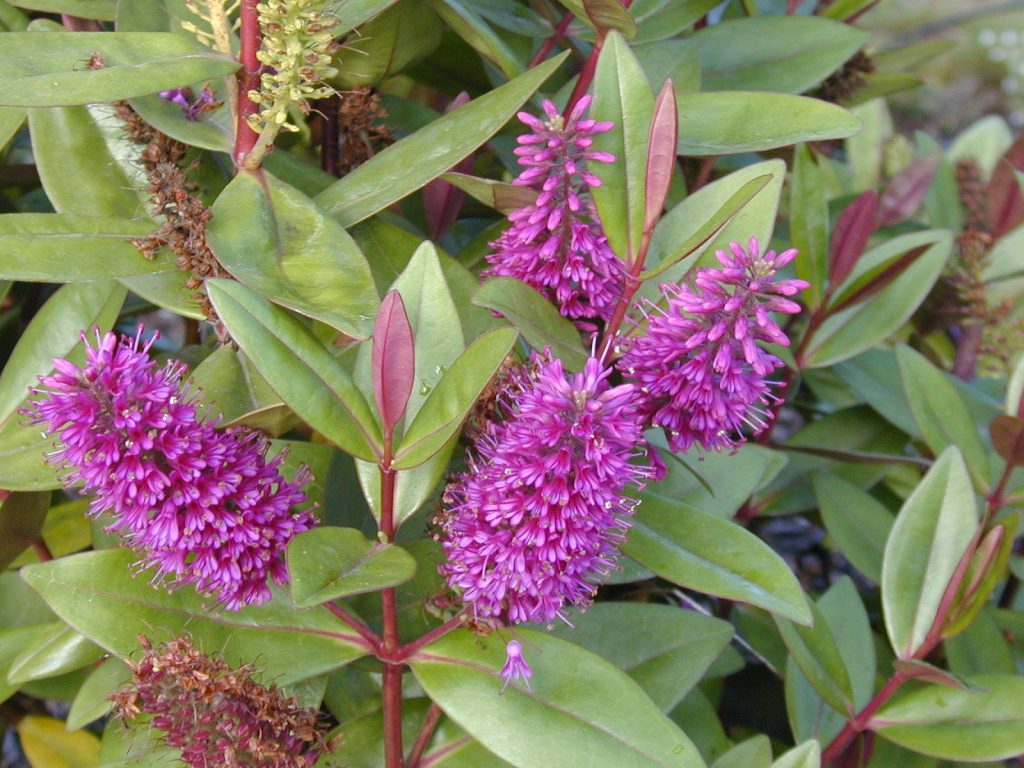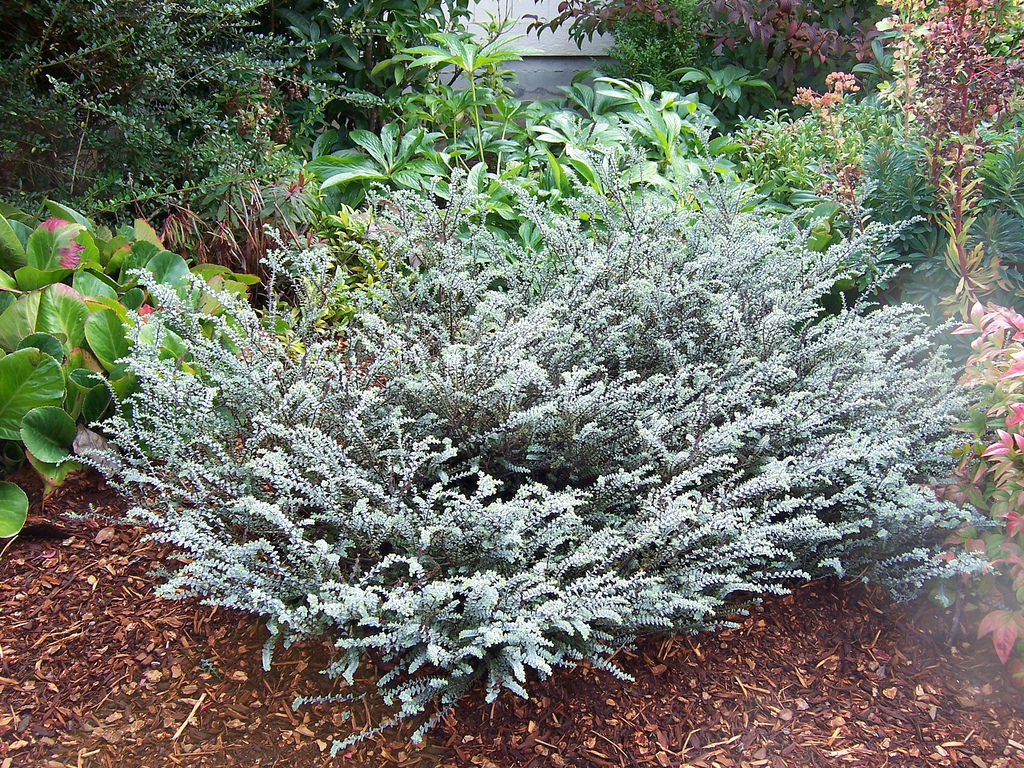If you like to prolong color in your landscapes through the summer and into the fall, consider planting evergreen shrubs called Hebes for vivid color in both flowers and foliage.
“Most Hebes flower in the summer, but others bloom in late fall,” said Neil Bell, consumer horticulturalist with the Oregon State University Extension Service. “Some have colorful foliage that lasts through autumn. They provide an interesting change from the usual asters and maples we customarily rely on for autumn interest.”
Native to New Zealand, Hebes (pronounced HEE-bees) have hundreds of cultivars, but only a few are familiar to American gardeners.
“The plants may have acquired a reputation for lack of hardiness because some of the most popular cultivars introduced here are not hardy in very cold winters,” Bell said. “However, many Hebes do well in the Pacific Northwest if grown in a sheltered spot.”
Large-leaved Hebes can be injured by temperatures below 25 degrees and are less hardy than those with small leaves. Rather than avoid buying large-leaved shrubs, consider putting them in a sheltered spot or in a container you can move indoors temporarily if it gets cold. For showy purple flowers in the fall, Bell suggests cultivars “Amy” and “Alicia Amherst.” “Purple Picture” blooms in June but flowers profusely again in October and November. Some red-flowering Hebes, such as “Hobby,” provide color through November and even through December in a mild year. “Bowles Hybrid” produces lavender flowers in summer, but will bloom again in the fall, even into January.
“Except for ‘Bowles Hybrid,’ which is hardier, all these hybrids are susceptible to cold,” Bell said. Plant them against a sheltered wall or tucked between other shrubs. Be prepared to give them a little extra cover if the temperature threatens to drop suddenly.”
Several small-leaved Hebe cultivars that are hardy west of the Cascades have beautiful and unusual foliage. Some are commonly sold in the Pacific Northwest. “Quicksilver,” as the name suggests, has small silvery leaves. “Boughton Dome” has grayish foliage. “James Stirling” has ochre leaves and resembles a small conifer.
Another unusual characteristic of some Hebes is a noticeable change in foliage color from summer to winter. Some cultivars take on a purplish or reddish cast during winter. Perhaps the best known is “Caledonia,” which turns purple. “Sapphire” has shoots that turn bright red at the tips in the winter.
Several of the variegated cultivars are beautiful and unusual, but are large-leaved and require a protected spot if you want them to survive the winter. They include Hebe speciosa “Variegata,” “Tricolor” and “Andersonii Variegata.”
In addition to a protected location, Hebes need at least partial sun, well-drained soil and water during the summer months. Most do well without much pruning, and annual moderate pruning after they bloom works well.
For more information, refer to an OSU landscape evaluation of Hebes.



